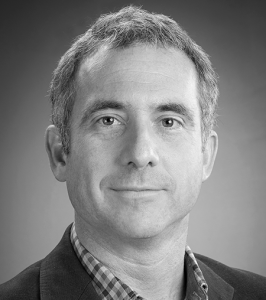SSA announces the candidates for the 2019 election to add four members to the Board of Directors. The nominating committee, chaired by Jim Mori, confirmed a slate of six individuals to run for office. The committee included:
- Jim Mori (Kyoto University)
- Rachel Abercrombie (Boston University)
- Gail Atkinson (Western University)
- Ken Hudnut (U.S. Geological Survey)
- Zhigang Peng (Georgia Institute of Technology)
Every year, four directors are selected to serve three-year terms, which begin at the Society’s Annual Meeting.
Candidate statements are presented below, in alphabetical order by candidate last name. The election will open in early October and close 5 p.m. Pacific Friday, 4 January 2019. For assistance, contact election@seismosoc.org or phone 510‐525‐5474.
Candidate Statements
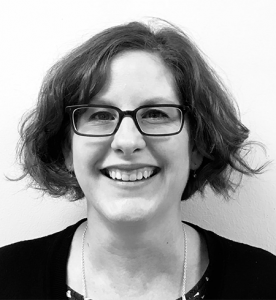 Heather DeShon
Heather DeShon
Associate Professor, Southern Methodist University
Principal fields: earthquake location, seismic tomography, earthquake source physics, intraplate and induced earthquakes, subduction zone processes, network and real-time operations
On 18 April 2006 at 5:12 am, I stood in downtown San Francisco observing a moment of silence at Lotta’s Fountain; in 2002 I dug a hole to find tsunami deposits from the 1700 Cascadia earthquake on Vancouver Island; in 2007 I sampled Kilauea’s lava; in 2011 I cried as Dr. Kojiro Irikura accepted the Bruce Bolt medal so soon after the Japan earthquake and tsunami. These are formative memories for any seismologist and mine are associated with field trips and events at Seismological Society of America annual meetings. SSA serves to link seismologists across the ever-increasing sub-disciplines in the field, and across generations. As a member of the Board, I would focus on making sure the annual meeting continues to inspire us to the possibilities and breadth of seismology research and the true importance of the applications and understanding we develop. Ensuring that the SSA reaches minority and under-represented groups is a priority. My recent experiences with induced earthquakes in Texas served as a reminder to me of the importance of societies like SSA in providing accurate scientific knowledge to the public, industry and government sectors. The Society should provide strong voice that speaks to the importance of seismology to the national and international interest, and the publications of the SSA need to remain affordable, high impact and responsive to change.
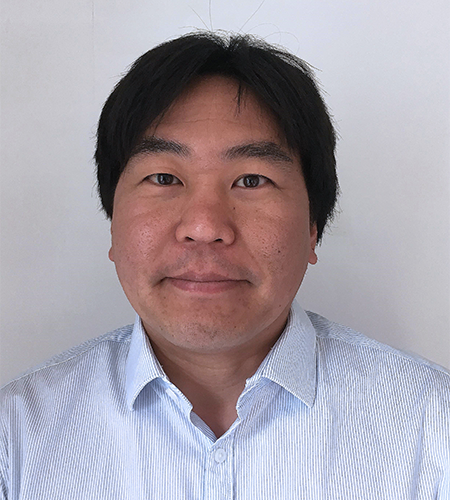 Katsuichiro Goda
Katsuichiro Goda
Associate Professor and Canada Research Chair, Departments of Earth Sciences and Statistical and Actuarial Sciences, University of Western Ontario, Canada
Principal fields: engineering seismology, seismic hazard, tsunami hazard, catastrophe modelling
The Seismological Society of America (SSA) is the prime community for seismology and embraces a broad and diverse range of disciplines. The annual meetings bring together a diverse range of academics (including students who are the future generation of the Society) and professionals and serve as a multidisciplinary international forum for seismological research. BSSA and SRL attract high-quality and high-impact articles around the world. Indeed, the SSA is my favourite scientific community and I have a great aspiration to get involved closely. If elected, I would like to contribute to the SSA by promoting interdisciplinary multi-hazard research, such as cascading seismic-tsunami-geo hazards, and by encouraging a wider and greater participation from the engineering and professional communities. Active collaboration across various fields, including seismology, earthquake engineering, tsunami engineering, geotechnical engineering, and catastrophe modelling, is essential for making the real impact of the seismological research to enhancing public safety from earthquake-related disasters. I believe that the SSA can play a vital role and take a strong leadership in this important endeavour to achieve more effective earthquake disaster risk reduction and seismic resilience.
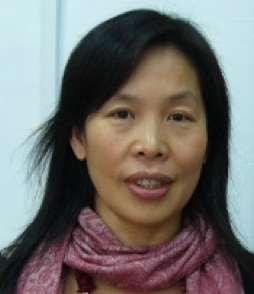 Kuo-Fong Ma
Kuo-Fong Ma
Earthquake-Disaster & Risk Evaluation and Management (E-DREaM) Center, National Central University
Principal fields: earthquake source studies, borehole seismology for fault zone dynamics, earthquake hazard and risk assessment
Earthquakes have their preferred regions of occurrence, but earthquake science does not. Understanding earthquake science, especially, the related hazard and mitigation issues, requires international efforts, since it is often difficult for individuals to face the challenges alone when dealing with a devastating event. Frequent severely damaging events, especially in Asia, have brought closer international collaborations that share new technologies and involve multi-disciplinary efforts. Also, with recent developments in social media, which promote the rapid exchange of earthquake information with true/false knowledge, the role of earthquake professionals has become more important than ever for guiding the scientific knowledge of our societies and governments. SSA has long served as a leader in the worldwide earthquake science communities. And, I believe SSA should maintain its well-respected position with stronger efforts in bringing worldwide earthquake professionals to the public forefront. During my service in Taiwan for more than two decades, including next year’s 20th commemoration of the devastating 1999 Chi-Chi earthquake (Mw7.6), I understand the importance of international collaborations, not only for interdisciplinary studies on geologic fault zone structures and seismology, but also for practical implementation programs of hazard mitigation and risk management. I believe it is important to promote more participation from the populous Asian region, for international knowledge sharing and challenges of new problems, in order to keep the long-standing reputation of SSA as the leading seismological organization worldwide
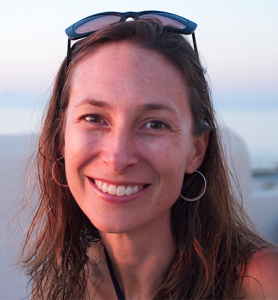
Meghan S. Miller
Associate Professor and Associate Director, Research School of Earth Sciences, Australian National University and AuScope Earth Imaging Program Leader
Principal fields: structural seismology, tectonophysics, field-based observational seismology, education, outreach
It is an honor to be nominated to run for a second term for the Board of Directors of the Seismological Society of America. It has been rewarding to serve on the board for the last three years and I would like to continue to do so. I have particularly enjoyed serving with other committee members on awarding student grants for the Annual Meeting and Global Travel and co-chairing the Student Award Committees. If re-elected I will continue to focus on engaging the next generation of seismologists and the broader international community of seismologists. My own experience in multidisciplinary, international research and education can provide a perspective that I hope will add to our strong, premier professional society for seismology.
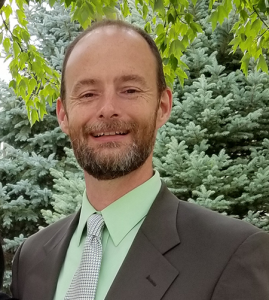 Andrew V. Newman
Andrew V. Newman
Professor, Georgia Institute of Technology
Principal fields: earthquake seismology and geodesy, volcano geodesy, the role of the subduction megathrust in tsunami generation, geologic hazards
I’m proud to be considered to serve the Seismological Society, a unique community that brings together academics, regulators, national labs and industry to communicate the latest science and policy surrounding earthquakes and their impact on populations and environment. Over the past fifteen years, a wave of large and devastating earthquakes has challenged the field. At the same time, information, and the speed of its access have grown rapidly. Now, with thousands of globally observing real-time seismometers, huge gains in existing geodetic infrastructure and satellites (e.g. recently expanding Galileo and BeiDou GNSS constellations, and upcoming improvements to US GPS with Block-IIIa satellites), nascent usages of rapidly available InSAR datasets (e.g. from Sentinel, ALOS, and soon NISAR), and a continuously growing ocean-wide network of open-ocean tsunami-meters, we continue to grow this “Big Data” field, constantly pushing the limits of our abilities, including multi-tier, multi-threaded real-time information, open data access/archiving, and enhanced modeling capabilities. As scientists, we are working to handle these information streams in evolving ways, with adaptive algorithms, and machine learning. Too, with social network platforms, many are disseminating results from events, in novel ways prior to meetings and publications. This is creating a brave new world. One that certainly causes trepidation amongst many, and excitement for others. How should we proceed? We must think that some rapid results may lead to mitigating additional harm after earthquakes. However, they may come at the cost of causing undue stress in a time already full of concern. SSA, as an organization focused on exchange and dissemination of science essential for an earthquake aware and safer environment, has a unique role for guidance in our actions and scientific etiquette online after an event. I plan to use my experiences from the GRL Editorial Board to explore opportunities to bridge communication of our most rapid information to promote open robust, citable, and exchangeable results and datasets. Surely, most of us are interested in not just furthering our science, but furthering our global earthquake safety.
John Townend
Professor of Geophysics, Victoria University of Wellington
Principal fields: seismotectonics, fault mechanics, microseismicity
I am honored to have been nominated to stand for a second term on the Seismological Society of America’s Board of Directors. Since being appointed to the Board in 2016, I have been struck by how tirelessly SSA works to promote science and science-based decision-making, and how its advocacy for science is matched by its advocacy for science communication. To reiterate a point I made when first nominated, SSA’s goals in understanding seismic phenomena, mentoring the next generation of scientists, and informing decision-making clearly and dispassionately are ever more relevant in an era of rapid communication, near-instantaneous global media coverage, and often polarized social and political debate. SSA’s ethos is particularly evident during the annual conference, where early-career researchers can showcase their research and engage with contemporaries and with senior colleagues alike in a supportive environment that emphasizes both the science and its uptake. I have previously served on SSA’s Publications and Membership committees, the 2016 Nominating Committee and the 2017 Board Nominating Committee (as chair) and, among other current roles, am contributing to the development of SSA’s first Scientific Integrity and Professional Ethics Policy. If re-elected, I will continue to prioritize SSA’s nurturing of early-career scientists, its support of international collaboration, and its efforts to serve as an authoritative, accessible, and objective voice on seismic phenomena and the hazards they pose worldwide.
Voting in our election is a benefit of membership with the Seismological Society of America.

